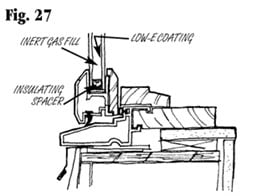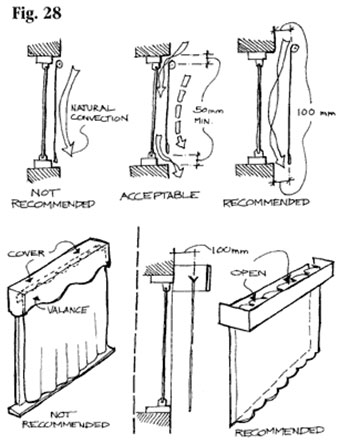How to prevent condensation?
Condensation on windows occurs when the surface temperature of the glass (glazing), sash or frame is lower than that of the humid air around it. The moisture vapour in the air changes into liquid water on contact with these cold surfaces. Condensation will often occur at the edge of the glazing because this is where cold air is more likely to seep through. Condensation can reduce the amount of natural light that comes through the window, affecting visibility, and also cause stains, mould and peeling paint on surfaces near the window.
Exterior condensation
Energy-efficient windows will occasionally have condensation on the exterior glass surface. This usually happens during periods of warm weather and high humidity near the time of sunrise. Because energy-efficient windows greatly reduce the amount of heat escaping to the outside (which is good during the long periods of cold weather), the exterior glass surface is cool enough to allow condensation to form for a short period of time.
Prevention techniques
You may have to consider one or more of the following techniques to reduce or stop condensation:
 Condensation resistance
Condensation resistance
Manufacturers use several techniques to increase the condensation resistance of windows. These include:
- inert gas between glazings
- low-emissivity (low-e) coatings that increase the temperature of the glass
- insulating spacers that reduce heat conduction
- non-conducting sashes and frames
Energy-efficient windows are least likely to have condensation. Their resistance to condensation, however, depends on the indoor humidity level.
Shading
The shading of windows, either from interior drapes and curtains, or from exterior landscape elements such as trees, will also influence the amount of solar gain. On sunny days during the winter, keep the drapes open to admit as much solar gain as possible.
Remember that the type of trees and shrubs you plant near your windows may affect the winter solar gain potential of the windows. For southern exposures, select deciduous trees that have thin branching characteristics. They will provide shade in the summer but will allow more sunlight through after they lose their leaves in the fall.
Curtains and blinds
Interior window accessories such as curtains, blinds and valances must not prevent air from moving around the surface of the window. Any restriction of air movement will increase condensation on the window.

Hot air registers and heaters
Heat loss through windows is greater than through the adjacent walls, even if the windows are energy efficient. This is why windows that have heat sources located below them are less susceptible to condensation than other windows. When the heating system is in operation, the air temperature will be higher in the vicinity of the window than in the centre of the room, resulting in increased condensation resistance. You must take care, however, to keep hot air from the registers or baseboard heaters from flowing directly onto the interior surface of the glass. Resulting thermal stress problems could cause the glass to break.
Source: Natural Resources Canada